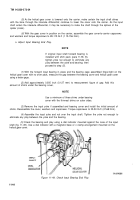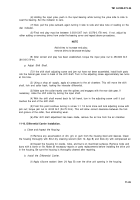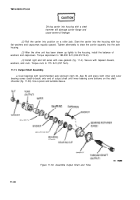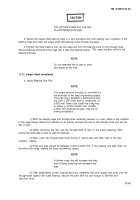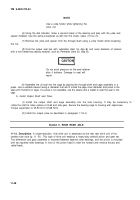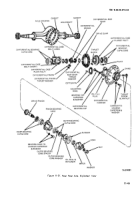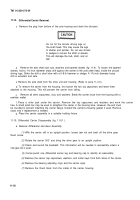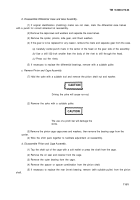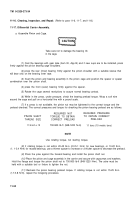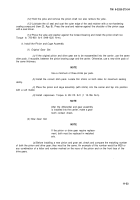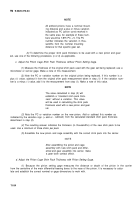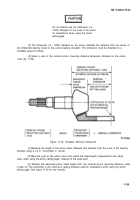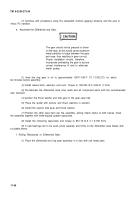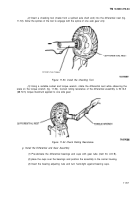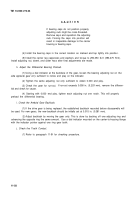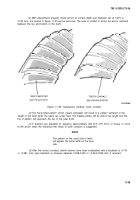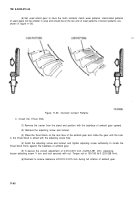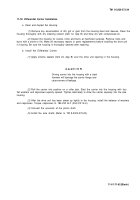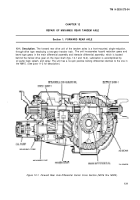TM-9-2320-273-34 - Page 500 of 801
TM 9-2320-273-34
NOTE
All amboid pinions have a nominal mount-
ing distance and a plus or minus variation
indicated as PC (pinion cone) marked in
the same area. An example of these num-
bers would be 7.875 PC + 5. The PC
number indicates the variation in thou-
sandths from the nominal mounting
distance for that specific gear set.
(b)
T
O
determine the proper shim pack thickness to be used with a new pinion and gear
set, use one of the following procedures (c or d) as applicable.
c. Adjust the Pinion Cage Shim Pack Thickness without Pinion Setting Gage.
(1) Measure the thickness of the original shim pack used with the gear set being replaced; use a
micrometer or vernier gage. Make a note of this measurement.
(2)
Note the PC or variation number on the original pinion being replaced. If this number is a
plus (+) value, subtract it from the original shim pack measurement taken in step
(1).
If the variation num-
ber is a minus (-) value, add it to the measurement from step (1). Make a note of this value.
NOTE
The value calculated in step (2) will
establish a “standard shim pack thick-
ness” without a variation. This value
will be used in calculating the shim pack
thickness used with a new pinion and gear
set.
(3)
Note the PC or variation number on the new pinion. Add or subtract this number as
indicated by the variation sign (+ add or - subtract) from the calculated standard shim pack thickness
determined in step (2).
(4)
The resulting answer indicates the thickness (in thousandths) of the new shim pack to be
used.
Use a minimum of three shims per pack.
(5)
Assemble the new pinion and cage assembly with the correct shim pack into the carrier.
NOTE
After assembling the pinion and cage
assembly with new shim pack and differ-
ential and gear assembly into carrier, make
a gear tooth contact check.
d. Adjust the Pinion Cage Shim Pack Thickness with Pinion Setting Gage.
(1) Because the pinion setting gage measures the distance or depth of the pinion in the carrier
from the centerline of the main differential bearing bores to the nose of the pinion, it is necessary to calcu-
late and establish the correct nominal or gage dimensions to work with.
11-54
Back to Top

